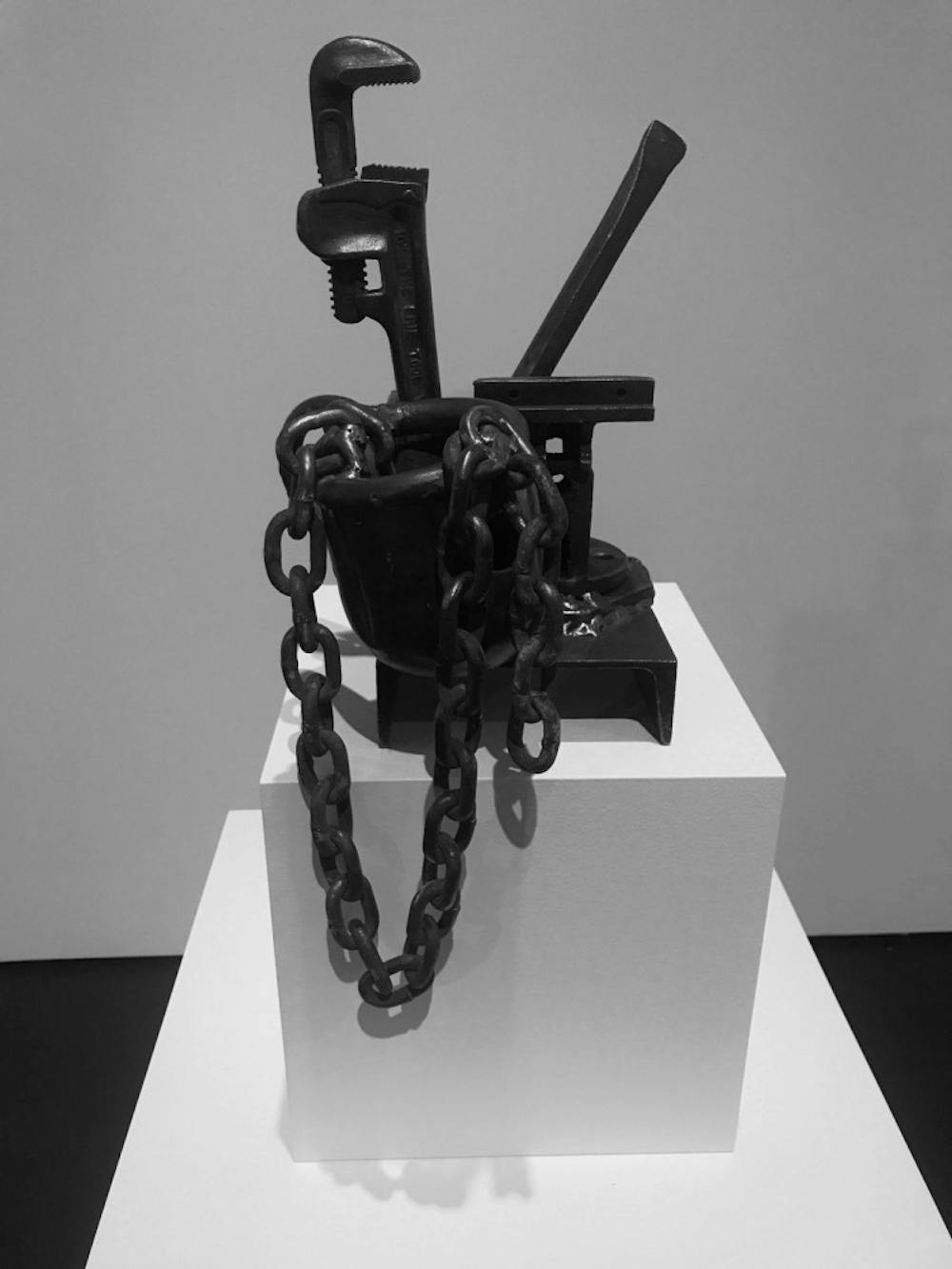Students, faculty and community members were treated to a conversation Nov. 14 between artists Melvin Edwards and Tony Ramos to mark the opening of Edwards’ exhibition, “Festivals, Funerals and New Life,” at the List Art Center’s David Winton Bell Gallery.
Edwards is a renowned contemporary sculpture artist with a career spanning five decades. He first showed in a solo exhibition at the Santa Barbara Museum of Art in 1965. In 1970, he was the first black sculptor to have a solo exhibition at the Whitney Museum in New York.
While first trained as a painter, Edwards was taught the basics of welding by graduate students near the end of his formal education, which changed the direction of his artistic endeavors. “Evolution had taken place and more took place through the years,” Edwards said. In 1963, Edwards created “Some Bright Morning,” the first sculpture in his ongoing and well-known “Lynch Fragment” series. “Some Bright Morning” was “really the first body of work that I thought was mine, independent of the influence of anybody else that I had learned from,” Edwards said.
Throughout his work, Edwards has been committed to the themes of African diaspora and black nationalism, as well as industrialization and exploited labor. Much of the exhibition, made from sharp and industrial materials such as barbed wire, chains and pieces of steel, seems to hold tension and frustration. Even absent of titles and the stories behind the pieces’ inspiration, the historical undertones are obvious.
“The work doesn’t shy away from … the ugliness of some of the ways in which we’ve structured our society,” said Ian Russell, curator of the exhibition at the Bell Gallery.
Tony Ramos, an artist and filmmaker from East Providence, was chosen to moderate Edwards’ talk because they “have been friends and comrades in the arts for over four decades,” Russell said. Ramos and Edwards were both influenced by political movements in Africa in the 1970s. Ramos is “very attuned to storytelling and how one presents or interrogates historical or contemporary narrative,” Russell said. “He knows how to help elicit a strong thread within conversation and dialogue.”
The title of the exhibition, “Festivals, Funerals and New Life,” is an extension of the title of a book of poetry by Jayne Cortez, Edwards’s late wife. “He’s very much gesturing to her presence and their collaborative relationship,” Russell said. Before her passing in 2012, Cortez’s last public appearance was at Brown as a participant in the 2011 Chinua Achebe Colloquium on Africa.
Following the talk, audience members were welcomed into the gallery space. In one corner, barbed wire hung in long dramatic loops from the ceiling, the loops thinning as they moved out from the corner. The piece is named for a line of poetry by Cortez: “Look through minds mirror distance and measure time.”
This combination speaks to another of Edwards’s primary focuses: language. Ramos described Edwards’s work as its own language. “Serious artists create their own language. You are having these experiences and each experience adds to the vocabulary,” he said.
The film “Some Bright Morning: The Art of Melvin Edwards” will be shown in the List Art Center Auditorium Dec. 5, followed by a conversation with the film’s director, Lydie Diakhaté. “Festivals, Funerals and New Life” will show until Feb. 11 in the Bell Gallery.





